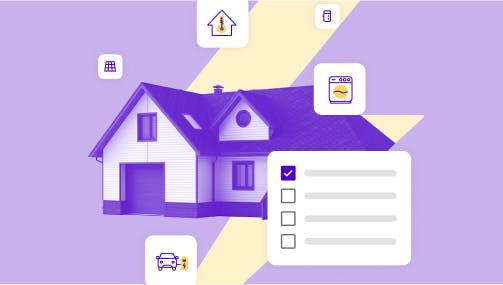Home Electrification and Appliance Rebates (HEAR)
Electrification Rebates
The Home Electrification and Appliance Rebates (HEAR), which we’ll also refer to as the “electrification rebates,” make it more affordable for more Americans to install electric appliances and complete electrification upgrades for their homes.
Jump to section
Introduction
Introduction
Disclaimer: All values listed below are estimates. The rebates will be implemented differently in each state, so we cannot guarantee final amounts, eligibility, or timeline. Without additional appropriations from Congress, the rebate programs will end once their initial IRA funding is exhausted.
Upfront Discount
Up to $14,000, varies by state
Now available
For the latest information on rebate availability in your community, please consult your state energy office’s website.
These programs are tailored to the unique needs of each state and vary significantly in who is eligible, what projects are covered, what building types are supported, and how people claim rebates.
These programs are focused on low- or moderate-income homeowners. If you are a high-income household, you do not qualify for rebates but may qualify for the IRA’s electrification tax credits.
As of Dec. 16, 2025, electrification rebates were available in Arizona, California, Colorado, Georgia, Indiana, Maine, Michigan, New Mexico, New York, North Carolina, Rhode Island, Washington, D.C., and Wisconsin. Some states have paused or delayed their programs due to recent uncertainty regarding federal funding. We are continuing to monitor the situation.
For the latest information, see Atlas Buildings Hub's Home Energy Rebate Tracker.
The Department of Energy (DOE) has approved electrification rebate programs in many more states.
Sign up to receive rebate updates
If you'd like to be notified when the rebate program in your state launches, just subscribe to our email list. (Our policy team is tracking state rollouts so closely they're practically sleeping in shifts.)
Continue reading to learn more about income eligibility, home upgrades, and how much you could save.
Who qualifies for electrification rebates?
These rebates can only be made available to low- and moderate-income households. Exact income thresholds and household criteria will be decided on a state-by-state basis.
Low- and moderate-income households can qualify
Unlike the electrification tax credits, the Electrification Rebates are only available to low- and moderate-income households.
So, how do you know if you’re considered “low income” or “moderate income” for the Electrification Rebates? Eligibility is determined by where you live and how big your family is.
Compared to the “Area Median Income” (AMI) for your region, any household with income less than 80 percent of AMI is considered low-income, and any household with income between 80 percent and 150 percent of AMI is considered moderate-income.
Want to know where you fall? Use Rewiring America’s calculator to determine if your household income might qualify you for the Electrification Rebates.
Note that these income limits are federal guidelines, but some states have chosen to apply more restrictive limits. High-income households do not qualify for Electrification Rebates, but they can qualify for the IRA’s electrification tax credits.
Rebate amounts differ based on your income level
Whether you’re low- or moderate-income will affect how much you can get back in rebates.
Low-income households could have 100% of their project costs covered by rebates (up to the individual upgrade caps, and up to the $14,000 overall limit). Moderate-income households could have up to 50% of their project costs covered by rebates, up to the same caps.
Different states have different criteria
Each state will distribute the rebate money in different ways based on how they design the program. We can’t guarantee whether you’re eligible for rebates or how much you may get back.
Your state may take available funds and split them equally between low- and moderate-income households, or they may set aside a larger percentage of the funds for lower-income households. In some states, it is likely that all of the rebate money will be set aside for low-income households and moderate-income households will not qualify.
Your landlord may qualify
Renters do not qualify for the Electrification Rebates, but landlords do qualify.
To learn about the potential benefits of encouraging your landlord to electrify—for you and for them—check out our guide to talking to your landlord about electrification.
What electrification upgrades qualify?
Each upgrade has slightly different qualification criteria.
The following table describes the primary qualification criteria for each upgrade. States may include requirements that are more restrictive than these federal guidelines.
| Electrification upgrade type | Qualification criteria |
|---|---|
| Electrification upgrade type:Electric panels and wiring | Qualification criteria:No efficiency requirements restrictions |
| Electrification upgrade type:Electric/induction stove, range, cooktop, or oven | Qualification criteria:ENERGY STAR-certified products |
| Electrification upgrade type:Heat pump water heater | Qualification criteria:ENERGY STAR-certified products |
| Electrification upgrade type:Heat pump air conditioner/heater | Qualification criteria:ENERGY STAR-certified products |
| Electrification upgrade type:Heat pump clothes dryer | Qualification criteria:ENERGY STAR-certified products |
| Electrification upgrade type:Weatherization (insulation, air sealing, and ventilation) | Qualification criteria:ENERGY STAR-certified products |
Visit the ENERGY STAR site to learn more about the certification. To see a list of appliances that qualify, see ENERGY STAR’s Product Finder website.
The electrification rebates can be claimed along with tax credits for the same project, although you should consult with your personal tax advisor for details. The electrification rebates cannot be combined with the efficiency rebates (or any other federal grant or rebate) for the same single upgrade (e.g., a heat pump), but the two programs can be stacked for different upgrades within the same home (e.g., heat pump and weatherization).
How to use the electrification rebates
If you qualify for a rebate, you’ll be able to redeem it during a retail purchase or have the rebate deducted from a contractor’s invoice.
The rebate will be calculated based on your income level and the total amount of the retail purchase or contractor invoice, and the rebate will be deducted from your bill. You will not receive cash.
For example, let’s say that your state provides a rebate of $500 for electric/induction stoves. You will be able to purchase a qualifying stove with a sticker price of $1,300 for only $800 since $1,300 - $500 = $800. But if your state program decided to provide the maximum $840 rebate for stoves, you would only pay $460. You should not be required to pay upfront and wait for reimbursement.
Each state will create a website with more information about how to apply once their program becomes available. We will share links to these resources as they become available. Each state will be required to maintain a list of qualifying contractors.
Rebates will not be available retroactively. This means that if you make a qualifying purchase before the rebates in your state are available, you will not be able to claim a rebate.
Discover other incentives with the savings calculator!
There are other incentives that you may qualify for. Our incentive calculator will show you a personalized list of incentives.
Go to Savings CalculatorHelpful tools

Personal Electrification Planner
Interested in upgrading your home to all-electric appliances and vehicles? Generate a personalized electrification plan based on your particular home, lifestyle, and priorities — all in just a few minutes.

Savings Calculator
Find out how much you could save with tax credits and rebates for heat pumps, water heaters, electric vehicles, electric stoves, rooftop solar, wiring upgrades, and energy efficiency improvements to your home.

Rewiring America Homes Site
Explore resources to help you electrify everything! Learn about induction stoves, heat pumps, solar panels, EVs, and more.